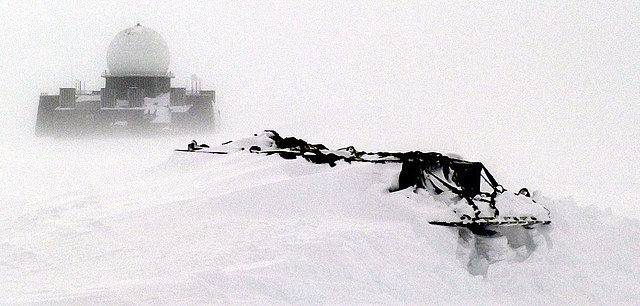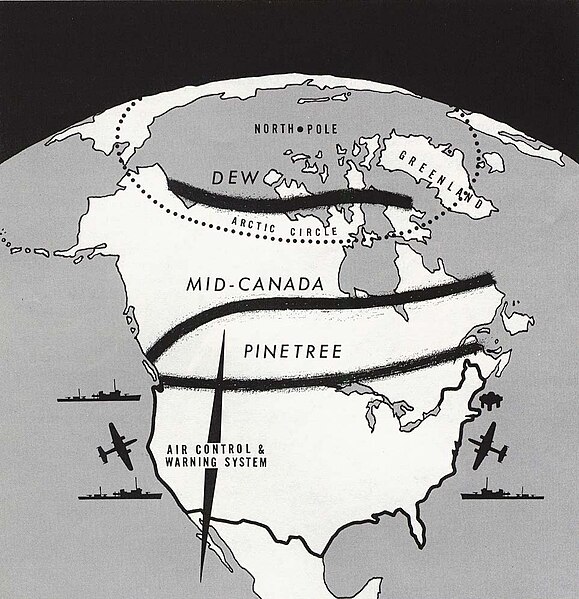Distant Early Warning Line
The Distant Early Warning Line, also known as the DEW Line or Early Warning Line, was a system of radar stations in the northern Arctic region of Canada, with additional stations along the north coast and Aleutian Islands of Alaska, in addition to the Faroe Islands, Greenland, and Iceland. It was set up to detect incoming bombers of the Soviet Union during the Cold War, and provide early warning of any sea-and-land invasion.
POW-2, now Oliktok Long Range Radar Site
The LeTourneau snow train in Alaska
DEW line station formerly at Point Lay, Alaska.
A DEW station in western Greenland is visible in the distance beyond the snow-drifted equipment pallets in the foreground of this photograph.
The Pinetree Line was a series of radar stations located across southern Canada at about the 50th parallel north, along with a number of other stations located on the Atlantic and Pacific coasts. Run by North American Aerospace Defense Command (NORAD), over half were staffed by United States Air Force personnel with the balance operated by the Royal Canadian Air Force. The line was the first coordinated system for early detection of a Soviet bomber attack on North America, but before the early 1950s radar technology quickly became outdated and the line was in full operation only for a short time.
Pinetree Line
Static display of an AN/FPS 508 radar antenna, one of the types used on the Pinetree Line. The antenna rotated at 5 revolutions per minute. The system could detect aircraft up to 200 mi (320 km) away and at altitudes of 100,000 ft (30,000 m). This antenna is on display at Air Force Heritage Museum and Air Park, Winnipeg
Saint Anthony Air Station, Newfoundland in July 1961. The main radar is centered, the Pole Vault antennas are on the right.







